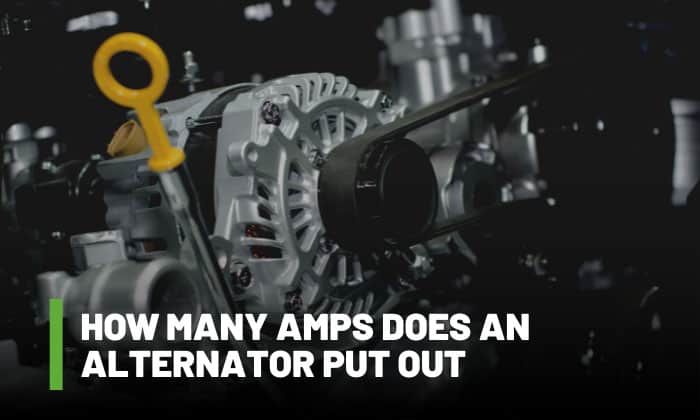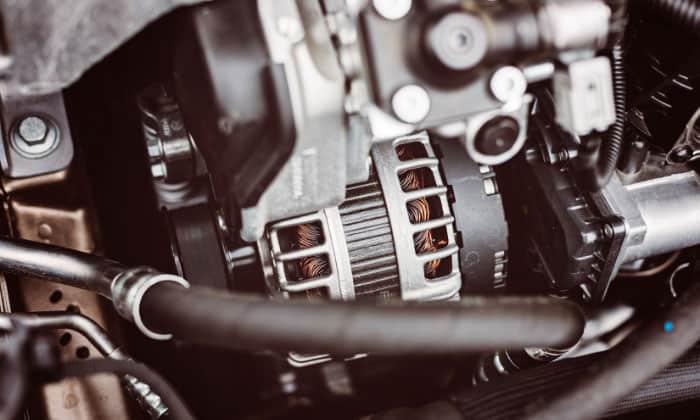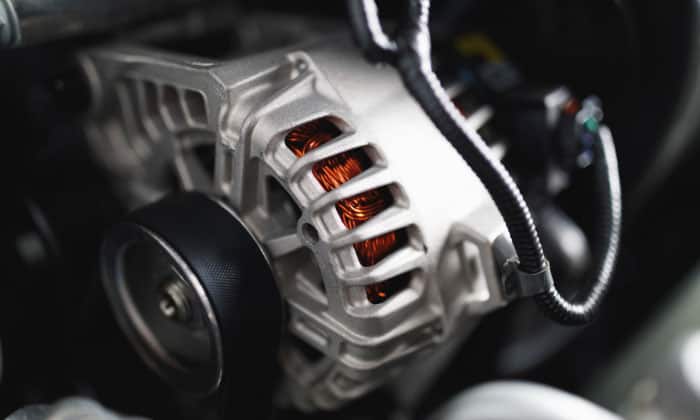Car alternators power the electrical devices in a car and charge the battery. However, it should be able to deliver enough amps to do its job properly. The best way to choose the right alternator is to know how many amps does an alternator put out.
A 12v alternator for small vehicles may have ratings ranging from 60-80 amps, while larger vehicles have bigger ratings from 150 amps and above. However, higher RPMs may generate more amps.
Table of Contents
Calculate Amp, Watt, Volt
Before we start talking about car alternators, let’s talk about some quantities that will help understand alternator amperage. Some quantities that we may encounter are electric power in watts and voltage in volts.
Alternator wattage, amperage and voltage are related using the following equation:
Electrical power (watts)=current (amps)×voltage (volts)
This equation can be re-arranged depending on what you need. For instance, if you want to know how many watts can your alternator provide to plan the right one for all the electrical components in your vehicle, simply multiply the current rating and the voltage.
Types of Alternators
An alternator is basically a synchronous generator that produces electricity using mechanical energy. In fact, it’s called an “alternator” because it generates “alternating current” or AC power.
Different alternators exist for various uses. They may have modifications to suit their purpose but they all transform mechanical energy to electrical energy.
1. Automotive alternator
It is a standard alternator used in cars to charge the battery and supply electricity to other electrical components of the car. They replaced the DC dynamo generators due to increased load in the car such as larger headlights.
Passenger vehicles typically have a brushed alternator, and car alternator output amps typically range between 40 amps to 120 amps.
A larger vehicle may need a more powerful brushless diesel alternator like a truck alternator or a semi alternator with output between 160 amps and 320 amps. Even more powerful are for buses with outputs up to 430 amps at 12 volts.
2. Marine alternator
These powerful alternators can give 300 amps and need a distinct cooling system since they won’t experience free air as a natural cooling system unlike an automotive alternator. Also, they need components that can resist moisture and salt.
3. Radio alternator
Then we have radio alternators (while we won’t focus on them, we’ll place them here). These were used during World War 1 to transmit telegraphic messages using radio frequencies. They have output watts from 2kW to 200 kW.
Factors Affecting Alternator Amps
Different factors affect alternator output. However, the most important factors to consider are alternator speed and temperature. These either increase or decrease car alternator power output, and may interfere with how many volts the alternator needs to overcome to charge the battery.
- First, alternator output increases as the alternator speed increases. Increasing the alternator speed happens when the engine speed also increases, so alternator output is low when the car is at idle and output is greater when the car runs on higher speeds.
Charging the battery happens when alternator output amps at 2000 rpm is achieved, and its rated current is best seen at RPM of 6000.
- Then alternator output decreases at higher temperatures. Most alternators are rated at ambient temperature or below 40 degrees Celsius, and their output decreases by around 3% for every increase in 5 degrees Celsius.
How to Choose the Right Alternator
The best alternator size for your vehicle should be capable of providing enough electricity to power all of your electrical components, including charging the battery. Here is a rundown of the things you need to do:
- Write down all of the electric parts of your vehicle including their watts requirement.
- Solve the total current output of the parts. If watts are provided instead of amps, solve using the equation above.
- Determine alternator amps from the label. Make sure it is not lower than the total current requirement. You can also check alternator amps with multimeter.
Conclusion
Alternators keep the car up and running as long as they have enough current to give the electric components of the car and continue to charge it when needed.
They can provide from 40 amps for passenger vehicles, all the way to 430 amps for huge buses depending on your needs. Also, don’t forget that how many amps does an alternator put out is affected by alternator speed and temperature.

I am Edwin Jones, in charge of designing content for Galvinpower. I aspire to use my experiences in marketing to create reliable and necessary information to help our readers. It has been fun to work with Andrew and apply his incredible knowledge to our content.



